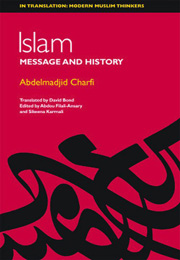3 - The Elaboration of Institutional Theory
from Part Two - The Message in History
Published online by Cambridge University Press: 12 September 2012
Summary
Having studied how Islam inevitably took on the characteristics of an institutional religion, we can go on to demonstrate how this affected the theories elaborated by Muslim scholars in the different fields of Islamic thought. These fields were not, originally, independent of one another; tafsīr, for example, was not an autonomous speciality, nor were hadīth or fiqh clearly defined. The areas of theological research were not yet delimitated, while the study of the origins of fiqh came into being only after the development of fiqh itself in order to set out the methods by which laws could be established through a process of deduction. These questions were interconnected and complementary, and were responses to practical questions arising in specific circumstances. They were not the outcome of specialised study or abstract calculation. The multiplicity of problems confronting the first generations of Muslims led them to find timely solutions which were intended to give a distinctive identity to the Muslim community and foster internal solidarity. Factors of division were numerous: racial origin; social standing; language or dialect; as well as contrasting cultures, economic and administrative institutions, and other diverging interests. In these circumstances, it was natural to reduce the manifestations of disunity and strive, insofar as possible, for a unified code of conduct and shared inner convictions. The message announced by the Prophet dealt with only a very small number of questions, while the texts, however varied their interpretation, were limited in contrast to the boundless variety of human history.
- Type
- Chapter
- Information
- IslamBetween Message and History, pp. 111 - 156Publisher: Edinburgh University PressPrint publication year: 2009



